
Delivered by people who’ve been there, an “I Love U Guys” Foundation training is a special blend of emotional heart and tactical takeaways. Our trainers’ stories from inside and behind school crises illustrate the importance of planning and preparing, while our easy-to-learn protocols and methods show you how.
We work with schools, districts, departments, agencies and organizations of all sizes. And we can work with resource-constrained organizations to help find underwriters.
In response to the COVID-19 crisis, we developed Remote Delivery for most of our training options. Turns out that Remote Delivery is a popular option for breakouts, professional development, and half day offerings. Pro studios (soon, in every time zone) give you ultimate scheduling flexibility.
This was the most focused, thoughtful, engaging, and ready to implement training that I have attended.
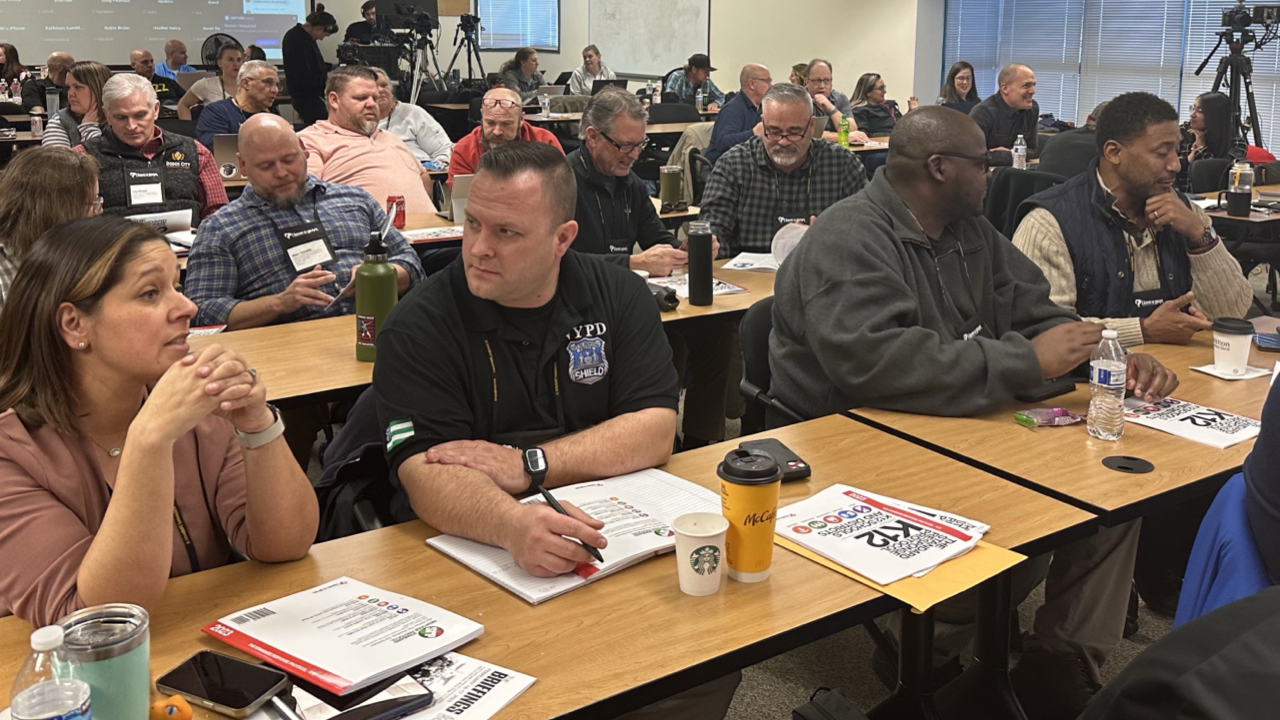
These educator focused sessions are perfect for training your staff on the SRP and SRM during in-service or professional development days. These sessions are perfect for groups that want an introduction to the SRP and SRM, and they are also great for groups that just want a refresher on the programs.
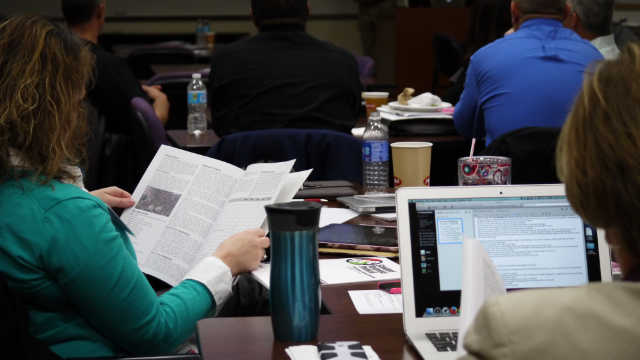
Ideal for conferences and events, SRP or SRM Breakout Sessions introduce the concepts and history of the programs and how to implement the program in an educational environment.
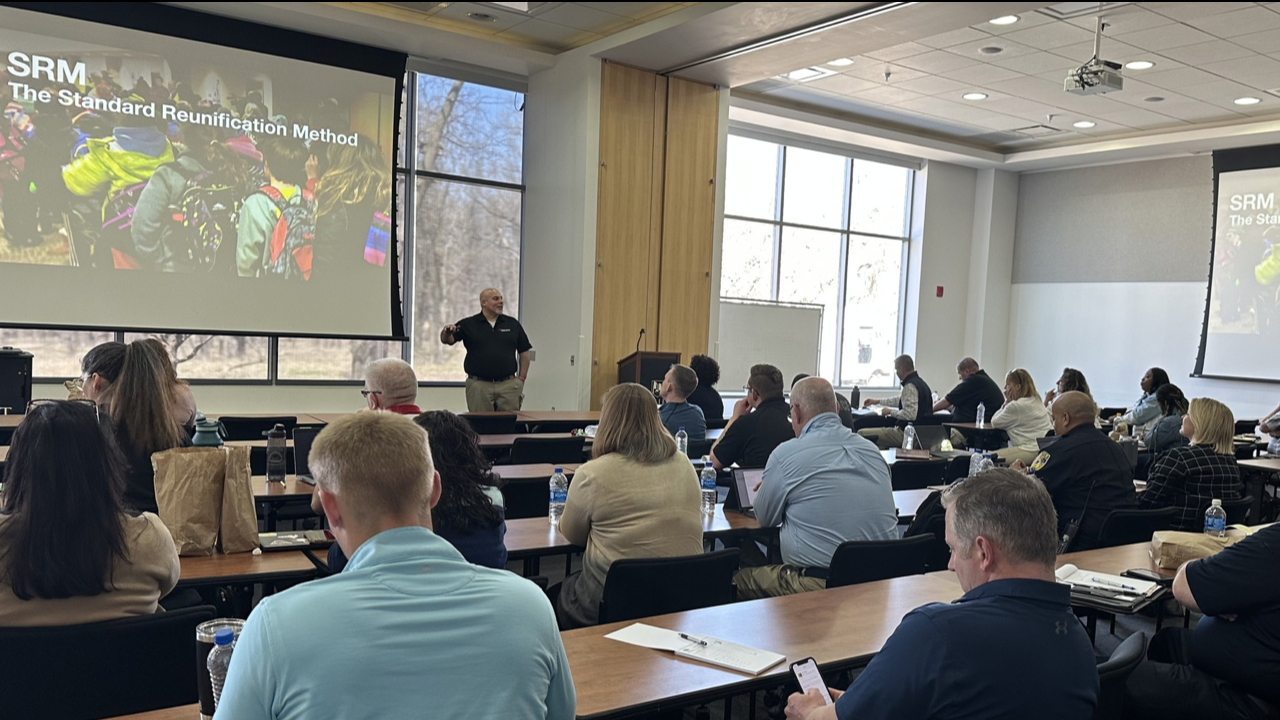
Perfect for in-service days or training events, our Half-Day Seminars provide a comprehensive exploration of the Standard Response Protocol and the Standard Reunification Method. Our offerings include an SRP, SRM, or SRP/SRM half-day seminar that each provide valuable insights and practical strategies for crisis response and post-crisis reunification.
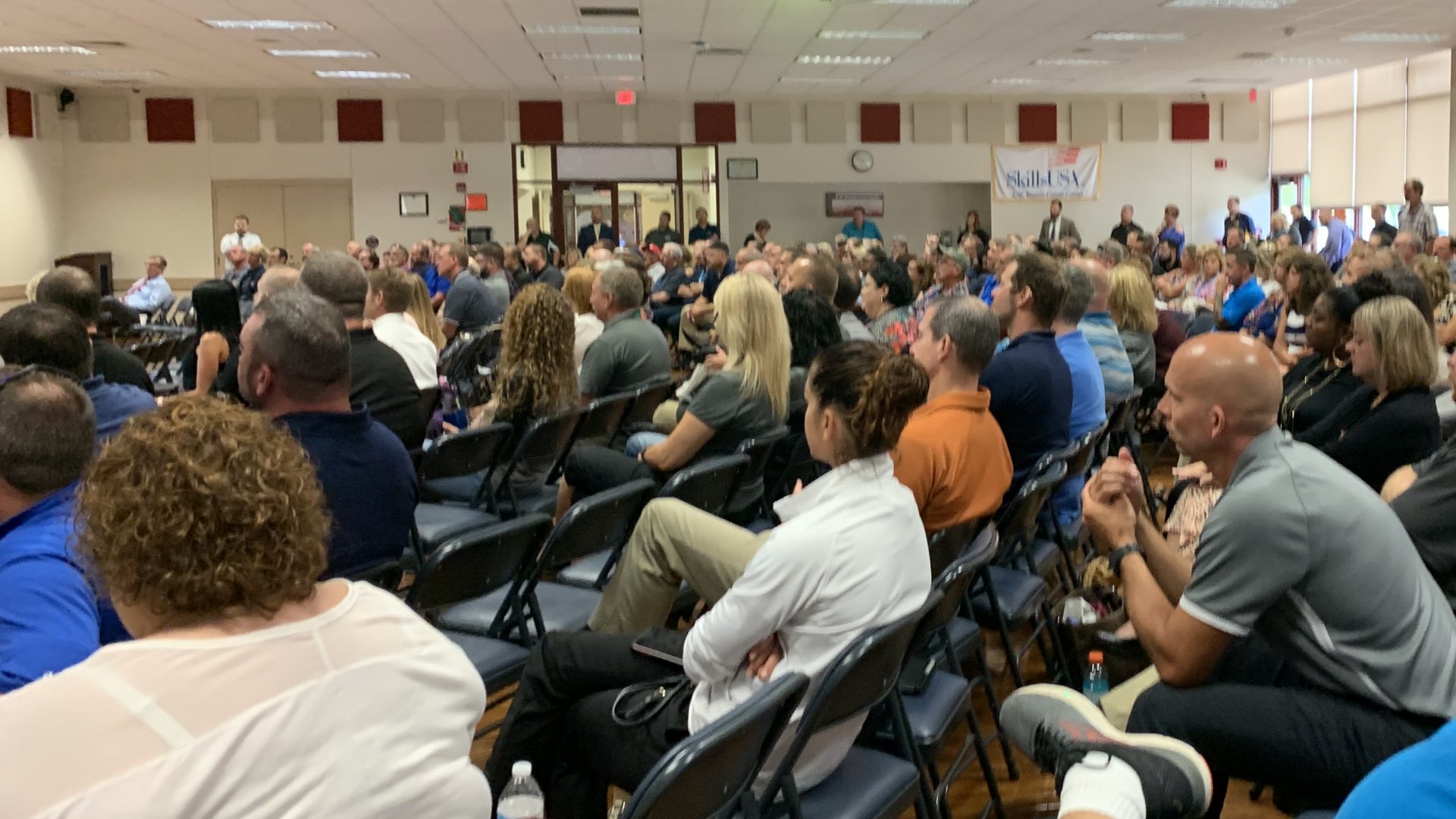
The Full-Day Workshop introduces the history, concepts and functionality of the Standard Response Protocol (SRP) and the Standard Reunification Method (SRM), including implementation of the programs, team training, advanced questions, and plenty of opportunities for networking with your peers.
Participants will come away from this workshop able to train others within their organization on the SRP and the SRM.
Restrictions do apply. (Hover for more info) Completion of the workshop allows attendees to conduct training, at no cost to attendees, on the SRP and SRM within their local organization or jurisdiction for two (2) years. After two years, we encourage individuals to freshen up with our latest Train the Trainer Workshop.

This 2-day course offers a day in the classroom and a day in the field, taking you through focused classroom training, tabletop discussions, and functional reunification exercises. All stakeholders in reunification are encouraged to take part in this exercise including district and school staff, public safety, emergency managers, mental health professionals, and community leaders.
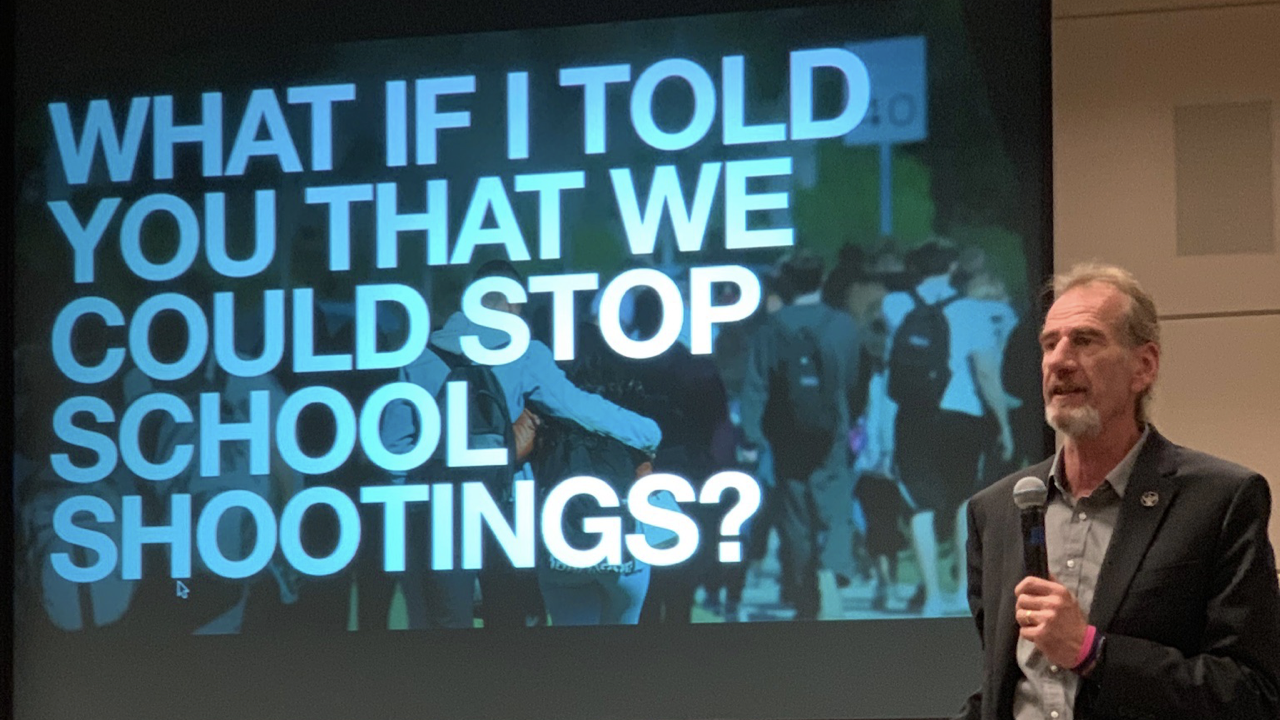
Choose from our half-day, full-day, or full-day with dual keynotes options led by nationally recognized leaders and practitioners. The Immersive Learning Experience features captivating keynote sessions and hands-on SRP and SRM workshops designed for skill development, with ample opportunities for networking with your peers.

The Briefings are nationally-recognized school and community safety symposiums that explore timely topics in school and community safety, as well as training on the Standard Response Protocol and Standard Reunification Method. While the Briefings’ historical roots are in Colorado, we’re branching out with regional Briefings around the country.
If you would like to be notified via email when we open up registration for the upcoming Briefings Symposium, sign up for updates!
Upcoming Briefings
Duluth, MN
April 16-17, 2024

School safety software providers have utilized the Standard Reunification Method in their applications for years. We are piloting a new program with Raptor Technologies, T-REx (yes, we know, but we couldn’t resist). T-REx is a unique opportunity to learn the practical mechanics of the SRM and how it works using mobile and desktop technology.
T-REx follows the same agenda as the 2-day SRM-REx workshop and functional exercises, with the added bonus of seeing how the process works with technology.
The “I Love U Guys” Foundation does not endorse any specific commercial product mentioned on this website, training, or exercises.

Reunification after a violent event is a unique event. In nearly all other reunification scenarios, the school or district remains the authority. Not so in a violent event. School Safety and Violent Event Incident Management (SSAVEIM) is a 1-day course training school administrators, teachers, and public safety together.
The SSAVEIM course is delivered by our Mission Partner C3 Pathways and the National Center for Integrated Emergency Response (NCIER).
The “I Love U Guys” Foundation does not endorse any specific commercial product mentioned on this website, training, or exercises.

Gather your staff in one “room” for a brief overview of the SRP or SRM. The Live Remote In-Service Professional Development Sessions introduce the concepts and history of the programs and how to implement the program in an educational environment.

Perfect for in-service days, our Live Remote Half-Day Seminars are a great opportunity to gather all of your staff in one place without room capacity for a comprehensive exploration of the Standard Response Protocol and/or the Standard Reunification Method.

Thursday, July 11th, 2024
Perfect for individuals or groups who want to learn more about crisis response, but are unable to host a training at their organization, the Live Remote SRP Half-Day Seminar covers the history, concepts, and functionality of the SRP, and how it provides a proven, action-based enhancement to all-hazards school safety planning.
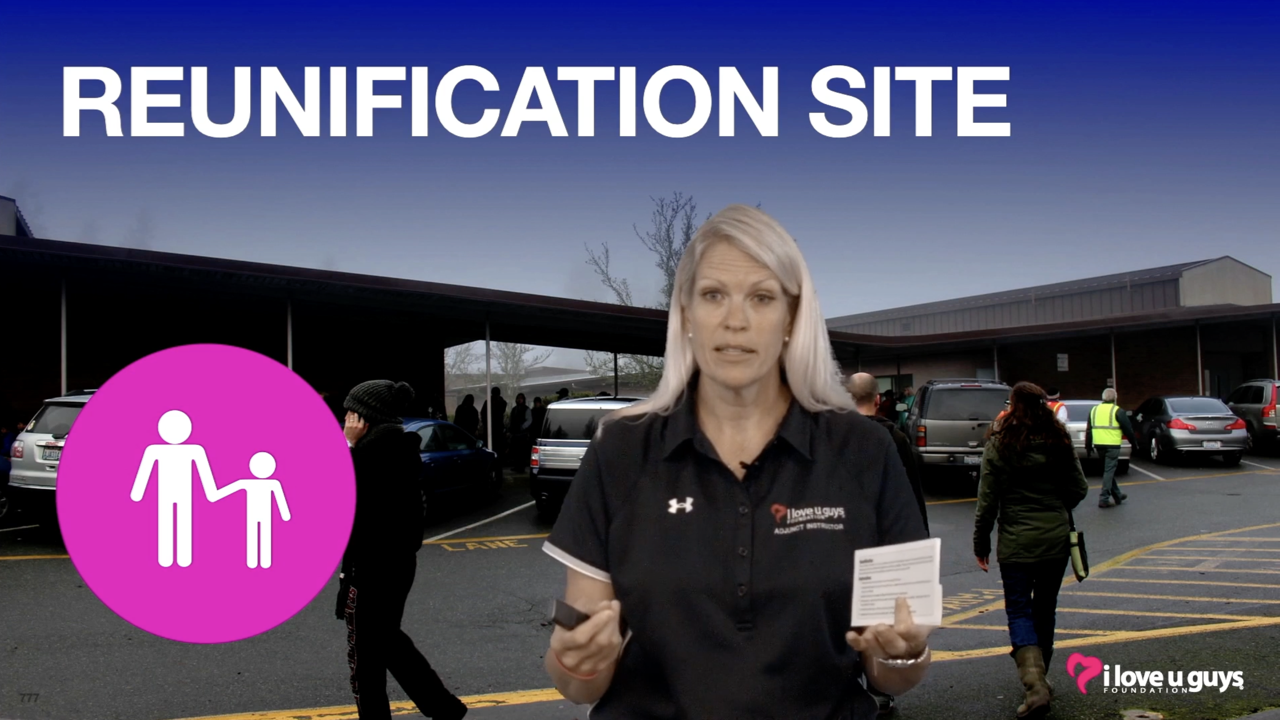
Friday, July 12th, 2024
Perfect for anyone looking for a deep dive into the reunification process, the Live Remote SRM Half-Day Seminar will go through the history, concepts, and functionality of the SRM, how it relates to the Standard Response Protocol, and how to get started on planning and practicing successful reunification in your organization.
We hear it all of the time. Our training is unique. Presentation visuals, media, and cadence based on real "Brain Science" and multi-media learning theory, not death by PowerPoint. Well versed instructors who are "Practitioners" in the field. A combination of "Just the facts", Bloom's Taxonomy, and storytelling, leveraging one of the most powerful learning tools humans have ever developed.
Sure, there are some frank, real-world conversations. And if our audience is all adults, there will be some "Adulting" moments. But don't be surprised if not just a chuckle, but a belly laugh, happen over the course of the presentation.
While we see it in many of our seminars and workshops, our exercises especially foster a unique outcome... Teams. Multi-disciplinary, cross-jurisdictional, institutionally sustainable, teams. It's not an accident. We use proven techniques, not awkward charades, to create an experiencial success in working with folks that may have been strangers that morning.

March of 2020 gave us an opportunity to reimagine our training delivery models. By April of that year we stood up our first Remote Broadcast Studio. Today our broadcast studios feature WireCast Production Software, Blackmagic Design 4K Studio Cameras, Panasonic Lenses, 56K balanced lighting rigs, and ATEM Switchers. And, we offer two remote delivery options with both a Presenter and a Producer live-casting. During every Remote Delivery we make time for a group Q&A and we offer access to recording after the presentation is done.
While this is the closest thing we offer to a "Traditional" Zoom presentation, there are some production quality commitments that enhance the learning experience.
"It felt like you were in the room." Achieving broadcast quality takes a commitment. The payout is well worth the cost.
The “I Love U Guys” Foundation has a reputation for high-content, high-value, high-engagement training. Here’s a behind the scenes glance at how we meet that expectation with online delivery.
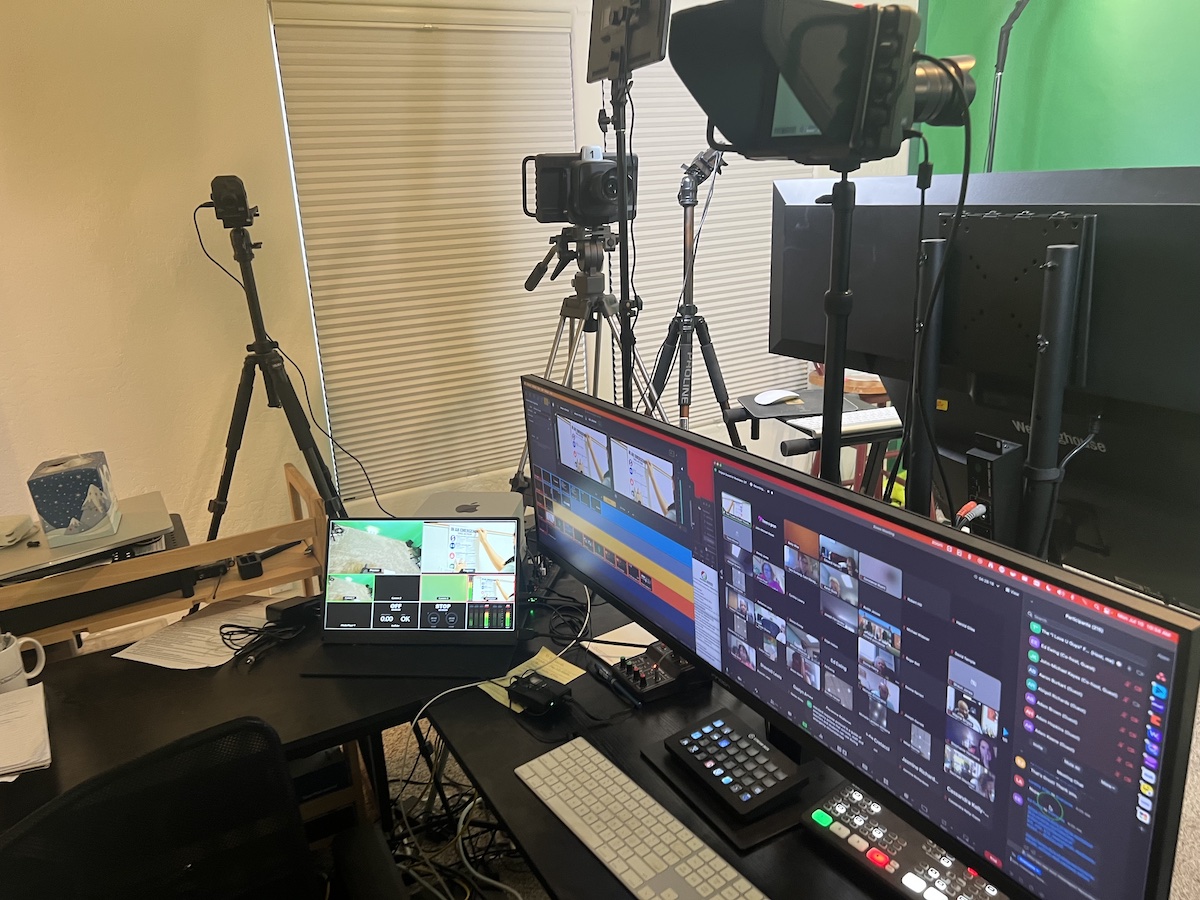
Studios in multiple timezones. Ensuring we have an instructor on hand and "in the zone". It gives you booking flexibility to meet your calendar opportunities.

More than talking over a PowerPoint, Foundation remote delivery uses high definition cameras, microphones and software to live stream our training events.
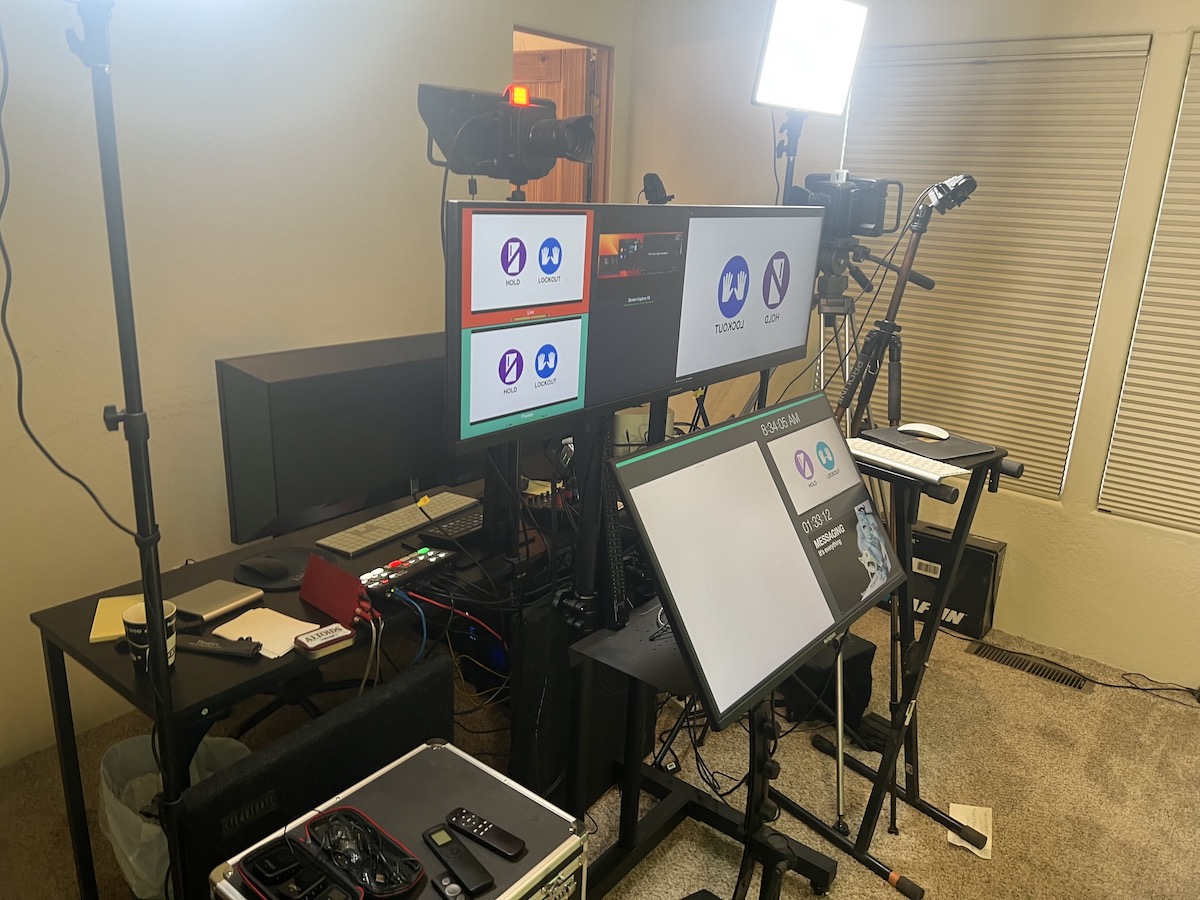
Our online training leverages our deep understanding of the “brain-science” behind multimedia learning. 45 - 55 minute sessions with a 15 minute break is our standard.

We’ve all probably had a “Zoomie” moment where all of the dogs in all of the rooms do a check in. Meet Baron. You might see him drop into a session from the Placitas Studio.
The “I Love U Guys” Foundation Immersive Learning Impact Sessions are experiences that transform thoughts and ideas into action. The morning sets the stage with real world, "skin in the game," accounts. The rest of the day is full-on program delivery, leveraging the "brain science" behind Foundation training.
Delivered by people who’ve been there, our Impact Sessions blend emotional heart with tangible paths forward with stories from inside and behind school crises They illustrate the importance of planning and preparing in a way only those who’ve been through it can.
If you are interested in booking one of our Impact Sessions, Reserve Now.
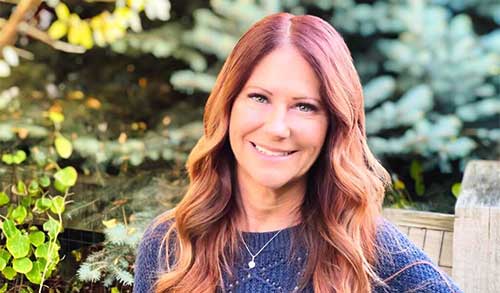
Carly Posey tells her story of what happened inside Sandy Hook Elementary School on December 14, 2012. She shares what went wrong and right on that day and the years to follow.
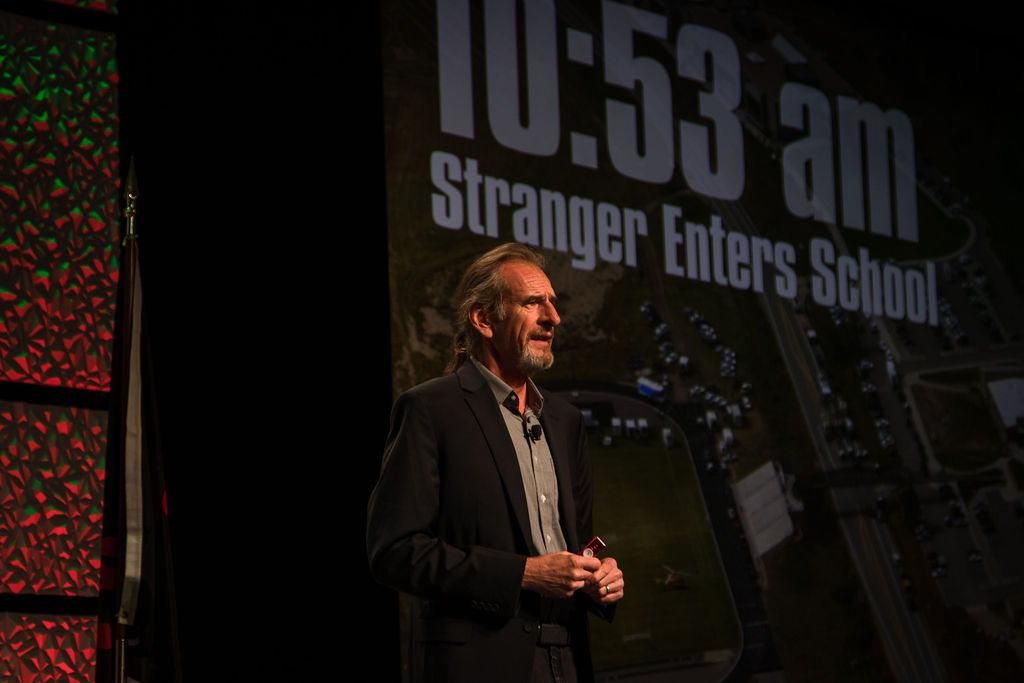
With nearly 50,000 organizations using Foundation programs, John-Michael Keyes tells the story of how a simple text message, "I love you guys" has transformed crisis response in schools and communities. From the events at Platte Canyon to the core mission, this day is punctuated by Mr. Keyes' workshop delivery.
Note: The Foundation team is jealously guarding Mr. Keyes' calendar. Consequently, there is limited availability to this offering.
Note from JMK: Team: You know I can see this. Do not put me out to pasture yet. Still spritely.
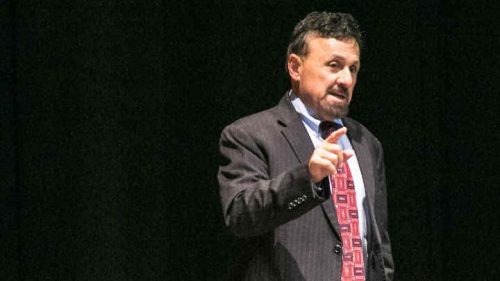
The tragedy at Columbine redefined the nation. Dr. Frank DeAngelis tells his story from the events to the aftermath.

As much as we prepare and train for emergencies, there are always things we don’t expect. In this session, James Englert provides first-hand details of the shooting at Arapahoe High School from the perspective of a school resource officer (SRO) on scene.
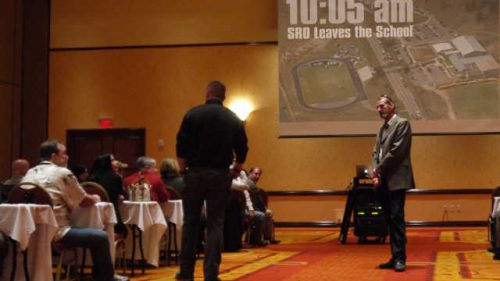
The tragic events on September 27th 2006 at Platte Canyon High School brought two unlikely people together: A.J. DeAndrea who devised and executed the tactical plan for the hostage rescue, and John-Michael Keyes who lost his daughter, Emily. The riveting point-counterpoint of their actions on that day are only part of the story.
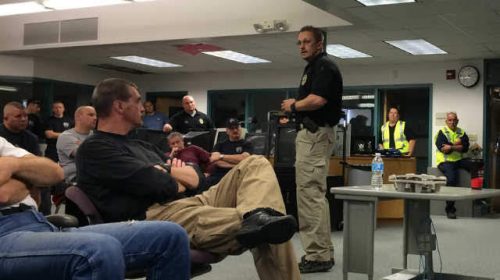
This presentation gives a deep dive of the events and lessons learned at Platte Canyon High School from the law enforcement perspective. A.J. DeAndrea devised and executed the tactical plan for the hostage rescue, and John-Michael Keyes lost his daugher, Emily. A SWAT Team lead and a victim's father share their experiences.
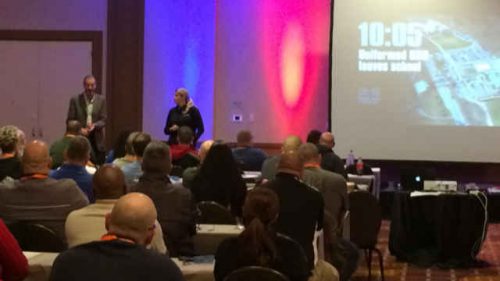
This presentation explores the interactions during the Platte Canyon High School events between a negotiator, Stacy Avila, and a 16 year old girl being held hostage. It's a powerful affirmation of a negotiator and a victim's father (John-Michael Keyes) sharing their experiences on that day and beyond.
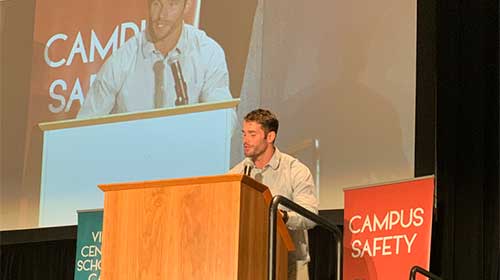
Jordan Murphy and Carly Posey share lessons learned through their stories and experiences of the Aurora Theatre shooting and the Sandy Hook Elementary School shooting, and their unbreakable bond through tragedy.

The true enemy of a great presentation is the brain of everyone in your audience. How it's wired. How it works. How it explodes. (Figuratively, of course. None of us want actual exploding brains.) Carpe Audience exposes the science behind multimedia learning and reveals how many of today's common practices actually induce cognitive overload.
Download Book
Ideal for in-service or professional development days, this session introduces the concepts and history of the SRP and how to implement the program in an educational environment.

Introduced in 2009, the Standard Response Protocol is a proven enhancement to school safety planning. Thousands of schools in the US and Canada have adopted the program.
SRP In-Service Professional Development Session introduces the concepts and history of the SRP and how to implement the program in an educational environment.
Educators, Administrators, School and District Safety Teams, Campus Supervisors
Law Enforcement, Fire/EMS, Emergency Managers, Victim Advocates
20-300
90 minutes - 2 hours
A basic understanding of the Standard Response Protocol
In this module, participants will receive an overview of the Standard Response Protocol.
Participants will gain an understanding of how and why the SRP should be used as an all hazards school safety enhancement.
At the conclusion of this module, participants will be able to
Participants will learn about the basic concepts and history of the SRP, and why it should be used as an all-hazards school safety enhancement.
Participants will deepen their understanding of the five actions of the SRP, and how the SRP can enhance school safety planning.
Participants will be able to apply the knowledge gained in the training to develop an SRP implementation plan for their school or organization, and use the SRP to manage daily operational school-based events as well as emergency situations.
Participants will be able to analyze the effectiveness of the SRP in different school safety scenarios, and compare the SRP to other crisis response programs and identify similarities and differences.
Participants will be able to critique the implementation of the SRP in their school or organization, and assess the effectiveness of the SRP in enhancing emergency preparedness and response.
Participants will be able to develop an SRP implementation plan for their school or organization and design and conduct exercises to test the effectiveness of the SRP in emergency situations.
Ideal for in-service and professional development days, this session introduces the concepts and history of the SRM and how to implement the program from a district perspective.
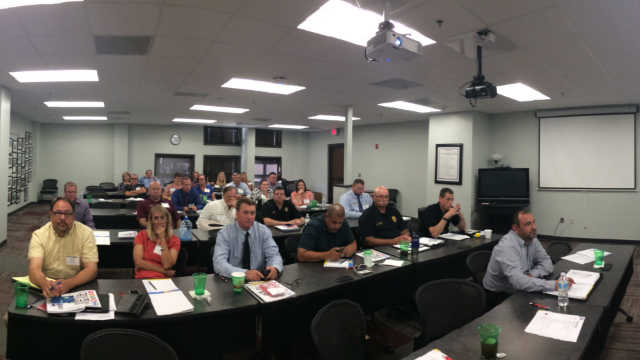
Introduced in 2012, the Standard Reunification Method fills a critical void in school safety planning: How to reunite students with their parents after a crisis.
The SRM In-Service Professional Development Session introduces the concepts and history of the SRM and how to implement the program from a district perspective.
Educators, Administrators, School and District Safety Teams, Campus Supervisors
Law Enforcement, Fire/EMS, Emergency Managers, Victim Advocates
20-300
90 minutes - 2 hours
A basic understanding of the Standard Reunification Method
In this module, participants will receive an overview of the Standard Reunification Method, explore case studies, and understand roles and expectations.
Participants will gain an understanding of how and why the SRM should be used in the aftermath of a crisis.
At the conclusion of this module, participants will be able to
Participants will learn a brief history of the SRM and how to conduct the reunification of students with their parents or guardians.
Participants will gain an understanding of how and why the SRM should be used in the aftermath of a crisis.
Participants will be able to apply their knowledge of the SRM by planning and conducting a student/parent reunification.
Participants will analyze reunifications to identify best practices and potential challenges.
Participants will be able to assess the effectiveness in their reunification plans and identify strengths and pitfalls.
Participants will be able to develop a reunification plan for their own school or district, taking into account local resources and needs.
Ideal for conferences, this session introduces the concepts and history of the SRP and how to implement the program in an educational environment.

Introduced in 2009, the Standard Response Protocol is a proven enhancement to school safety planning. Thousands of schools in the US and Canada have adopted the program.
SRP Breakout Session introduces the concepts and history of the SRP and how to implement the program in an educational environment.
Educators, Administrators, School and District Safety Teams, Campus Supervisors, Law Enforcement, Fire/EMS, Emergency Managers, Victim Advocates
20-300
90 minutes - 2 hours
A basic understanding of the Standard Response Protocol
In this module, participants will receive an overview of the Standard Response Protocol.
Participants will gain an understanding of how and why the SRP should be used as an all hazards school safety enhancement.
At the conclusion of this module, participants will be able to
Participants will learn about the basic concepts and history of the SRP, and why it should be used as an all-hazards school safety enhancement.
Participants will deepen their understanding of the five actions of the SRP, and how the SRP can enhance school safety planning.
Participants will be able to apply the knowledge gained in the training to develop an SRP implementation plan for their school or organization, and use the SRP to manage daily operational school-based events as well as emergency situations.
Participants will be able to analyze the effectiveness of the SRP in different school safety scenarios, and compare the SRP to other crisis response programs and identify similarities and differences.
Participants will be able to critique the implementation of the SRP in their school or organization, and assess the effectiveness of the SRP in enhancing emergency preparedness and response.
Participants will be able to develop an SRP implementation plan for their school or organization and design and conduct exercises to test the effectiveness of the SRP in emergency situations.
Ideal for conferences, this session introduces the concepts and history of the SRM and how to implement the program from a district perspective.

Introduced in 2012, the Standard Reunification Method fills a critical void in school safety planning: How to reunite students with their parents after a crisis.
The SRM Breakout introduces the concepts and history of the SRM and how to implement the program from a district perspective.
Educators, Administrators, School and District Safety Teams, Campus Supervisors, Law Enforcement, Fire/EMS, Emergency Managers, Victim Advocates
20-300
90 minutes - 2 hours
A basic understanding of the Standard Reunification Method
In this module, participants will receive an overview of the Standard Reunification Method, explore case studies, and understand roles and expectations.
Participants will gain an understanding of how and why the SRM should be used in the aftermath of a crisis.
At the conclusion of this module, participants will be able to
Participants will learn a brief history of the SRM and how to conduct the reunification of students with their parents or guardians.
Participants will gain an understanding of how and why the SRM should be used in the aftermath of a crisis.
Participants will be able to apply their knowledge of the SRM by planning and conducting a student/parent reunification.
Participants will analyze reunifications to identify best practices and potential challenges.
Participants will be able to assess the effectiveness in their reunification plans and identify strengths and pitfalls.
Participants will be able to develop a reunification plan for their own school or district, taking into account local resources and needs.
An Introduction to the Standard Response Protocol
Introduced in 2009, the Standard Response Protocol is a proven enhancement to school safety planning. Thousands of schools in the US and Canada have adopted the program.
The SRP Half-Day Seminar introduces the concepts and history of the SRP and how to implement the program for crisis response.
Completion of an in-person SRP Half-Day Seminar allows attendees to conduct SRP training within their organization for two (2) years. After two years, the individual must attend another Train the Trainer Workshop, as materials are updated periodically. Please note:
Educators, Administrators, School and District Safety Teams, Campus Supervisors, Law Enforcement, Fire/EMS, Emergency Managers, Victim Advocates
20-300
4 Hours
Participants will learn about the basic concepts and history of the SRP, and why it should be used as an all-hazards school safety enhancement.
Participants will deepen their understanding of the five actions of the SRP, how the SRP can enhance school safety planning and crisis response, and how to train on the program within their organization.
Participants will be able to apply their knowledge of the SRP to train others in their organization on the program and develop an SRP implementation plan for their organization.
Participants will be able to analyze the effectiveness of the SRP for crisis response and daily operations, and compare the SRP to other crisis response programs.
Participants will be able asses the implementation of the SRP in their school or organization, and evaluate the effectiveness of the SRP in enhancing emergency preparedness and response.
Participants will be able to develop an SRP implementation and training plan for their school or organization and design and conduct exercises to test the effectiveness of the SRP in emergency situations.
In this module, participants will receive an overview and schedule of the SRP/SRM Seminar. Participants will complete administrative requirements including registration and training rosters, and conduct introductions.
Participants will recognize the course goal, enabling objectives, course schedule, course performance requirements, and introduce themselves.
At the conclusion of this module, participants will be able to
In this module, participants will receive the Classroom Training Presentation of the Standard Response Protocol.
Participants will gain the ability to perform classroom training of the Standard Response Protocol.
At the conclusion of this module, participants will be able to
In this module, participants will receive an overview of the Standard Response Protocol.
Participants will gain an understanding of how and why the SRP should be used as an all-hazards school safety enhancement.
At the conclusion of this module, participants will be able to
In this module, participants will receive a top-level, general understanding of the Incident Command System. While it is based on the online training IS-100ScA available from FEMA, this module is a refreshing look at the basics.
Participants will gain an understanding of how and why Incident Command should be used in a crisis.
At the conclusion of this module, participants will be able to
In this module, participants will analyze case studies involving the SRP.
Participants will be able to apply the lessons learned from these incidents to their own response plans, and evaluate their response plans, and resources.
At the conclusion of this module, participants will be able to
In this module, participants will receive instructions on how to locate all SRP and SRM program materials, and event updates on iloveuguys.org.
Participants will be able to implement and train on the SRP and SRM in their organizations by using all the resources available at iloveuguys.org.
At the conclusion of this module, participants will be able to
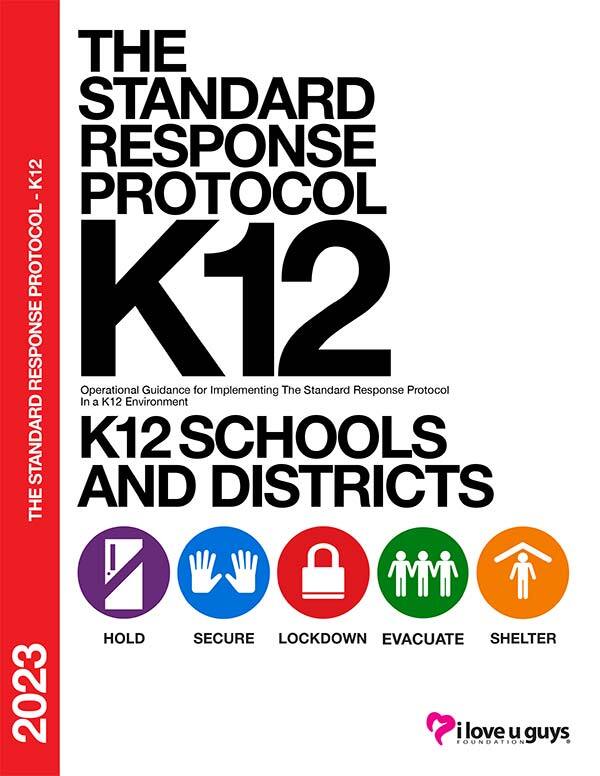
30 SRP K12 2023 Operational Guidance V4.1 books are included (a retail value of $350). If you would like to purchase additional books for your training, reach out and we can purchase them at cost plus 15%.
An Introduction to the Standard Reunification Method
The Standard Reunification Method fills a critical void in school safety planning: how to reunite students with parents and guardians after an emergency or crisis. The SRM Half Day Seminar introduces the history, concepts and functionality of the program and how to train the programs internally.
Completion of an in-person SRM Half-Day Seminar allows attendees to conduct SRM training within their organization for two (2) years. After two years, the individual must attend another Train the Trainer Workshop, as materials are updated periodically. Please note:
Educators, Administrators, School and District Safety Teams, Campus Supervisors, Law Enforcement, Fire/EMS, Emergency Managers, Victim Advocates
20-300
4 Hours
Participants will learn about the history, concepts and functionality of the SRM, the key principles and roles involved in the method, and the role that Incident Command plays in reunification.
Participants will deepen their understanding of the SRM by exploring case studies and examples of successful reunification efforts in various crisis situations.
Participants will be able to apply their knowledge of the SRM to create a reunification plan for their own school or organization.
Participants will analyze real-world reunification situations and learn how it was handled and understand the role the SRM plays in the aftermath of a crisis.
Participants will be able to assess their own reunification plan and determine how it can be improved using the SRM and its materials.
Participants will be able to develop a comprehensive reunification plan that integrates the SRM with their existing emergency management plans and procedures. Additionally, participants will be able to build their own Reunification Operation Kits (ROK) with the resources introduced in the seminar.
In this module, participants will receive an overview and schedule of the SRP/SRM Seminar. Participants will complete administrative requirements including registration and training rosters, and conduct introductions.
Participants will recognize the course goal, enabling objectives, course schedule, course performance requirements, and introduce themselves.
At the conclusion of this module, participants will be able to
In this module, participants will receive the Classroom Training Presentation of the Standard Response Protocol.
Participants will gain the ability to perform classroom training of the Standard Response Protocol.
At the conclusion of this module, participants will be able to
In this module, participants will receive a top-level, general understanding of the Incident Command System. While it is based on the online training IS-100ScA available from FEMA, this module is a refreshing look at the basics.
Participants will gain an understanding of how and why Incident Command should be used in a crisis.
At the conclusion of this module, participants will be able to
In this module, participants will receive an overview of the Standard Reunification Method, explore case studies, and understand roles and expectations.
Participants will gain an understanding of how and why the SRM should be used in the aftermath of a crisis.
At the conclusion of this module, participants will be able to
In this module, participants are introduced to resources and tools to build Reunification Operation Kits (ROK).
Participants achieve an understanding of how to create a ROK.
At the conclusion of this module, participants will be able to
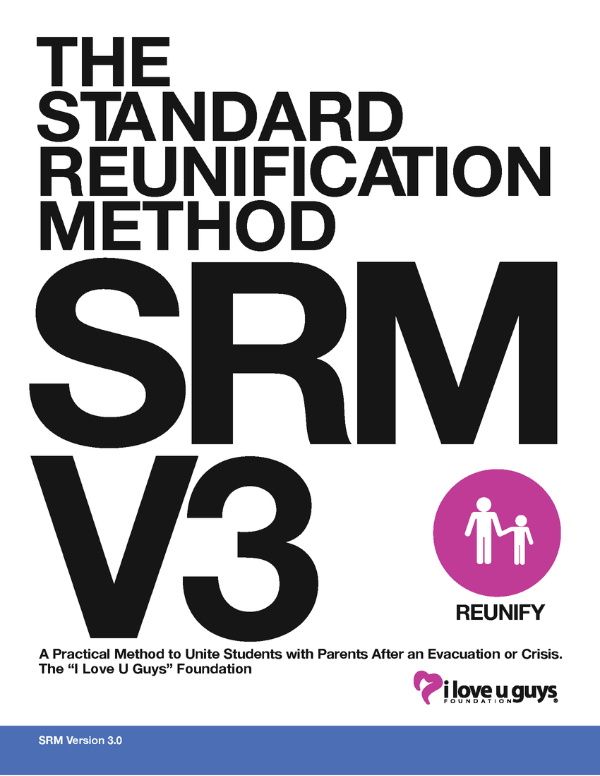
30 Standard Reunification Method Operational Guidance V3 books are included. If you would like to purchase additional books for your training, reach out and we can purchase them at cost plus 15%.
An Introduction to the Standard Response Protocol and the Standard Reunification Method
Introduced in 2009, the Standard Response Protocol is a proven enhancement to school safety planning. Thousands of schools in the US and Canada have adopted the program.
Introduced in 2012, the Standard Reunification Method fills a critical void in school safety planning: How to reunite students with their parents after a crisis.
The SRP/SRM Half-Day Seminar introduces the concepts and history of the SRP and the SRM and how to implement the programs, it also includes a brief introduction to Incident Command and how it relates to crisis management for educators.
Educators, Administrators, School and District Safety Teams, Campus Supervisors, Law Enforcement, Fire/EMS, Emergency Managers, Victim Advocates
20-300
4 Hours
Participants will learn about the concepts and history of the SRP and the SRM and how to implement the programs within their organizations.
Participants will gain an understanding of how and why the SRP should be used as an all-hazards approach to crisis response. Additionally, participants will gain an understanding of how and why the SRM should be used for reunification of students with their parents or guardians in the aftermath of a crisis.
Participants will be able to develop an SRP implementation plan for their school or organization and use the SRP to manage daily operational school-based events as well as emergency situations. Additionally, participants will understand how to plan and conduct a reunification using the SRM.
Participants will be able to analyze the effectiveness of the SRP in different crisis response situations and compare the SRP to other crisis response programs. Participants will also analyze real-world reunification situations and learn how it was handled.
Participants will be able to assess the effectiveness of the SRP in responding to crisis situations and managing daily operational school-based events. In addition, participants will be able to evaluate the effectiveness of their reunification plans and how they can be improved.
Participants will have the tools they need to develop implementation plans for the SRP and the SRM within their organizations.
In this module, participants will receive an overview and schedule of the SRP/SRM Seminar. Participants will complete administrative requirements including registration and training rosters, and conduct introductions.
Participants will recognize the course goal, enabling objectives, course schedule, course performance requirements, and introduce themselves.
At the conclusion of this module, participants will be able to
In this module, participants will receive the Classroom Training Presentation of the Standard Response Protocol.
Participants will gain the ability to perform classroom training of the Standard Response Protocol.
At the conclusion of this module, participants will be able to
In this module, participants will receive an overview of the Standard Response Protocol.
Participants will gain an understanding of how and why the SRP should be used as an all-hazards school safety enhancement.
At the conclusion of this module, participants will be able to
In this module, participants will receive a top-level, general understanding of the Incident Command System. While it is based on the online training IS-100ScA available from FEMA, this module is a refreshing look at the basics.
Participants will gain an understanding of how and why Incident Command should be used in a crisis.
At the conclusion of this module, participants will be able to
In this module, participants will receive an overview of the Standard Reunification Method, explore case studies, and understand roles and expectations.
Participants will gain an understanding of how and why the SRM should be used in the aftermath of a crisis.
At the conclusion of this module, participants will be able to
In this module, participants are introduced to resources and tools to build Reunification Operation Kits (ROK).
Participants achieve an understanding of how to create a ROK.
At the conclusion of this module, participants will be able to


30 SRP K12 2023 Operational Guidance V4.1 and 30 Standard Reunification Method Operational Guidance V3 books are included (a retail value of $350). If you would like to purchase additional books for your training, reach out and we can purchase them at cost plus 15%.
An Advanced Introduction to the Standard Response Protocol and the Standard Reunification Method
The SRP/SRM Full-Day Train the Trainer Workshop introduces the concepts and history of the Standard Response Protocol and the Standard Reunification Method and how to educate students and staff in the programs and strategies to implement the programs.
The SRP was introduced in 2009, and is a proven enhancement to school safety planning used by thousands of schools in the US and Canada. Later, in 2012, The SRM was introduced to fill a critical void in school safety planning: how to reunite students with their parents after a crisis.
This workshop takes a deep dive into what both of the programs are and how to begin using them, and it included a brief segment on Incident Command and how it relates to crisis management for educators.
Completion of an in-person SRP/SRM Train the Trainer Workshop allows attendees to conduct SRP and SRM training within their organization for two (2) years. After two years, the individual must attend another Train the Trainer Workshop, as materials are updated periodically. Please note:
Educators, Administrators, School and District Safety Teams, Campus Supervisors, Law Enforcement, Fire/EMS, Emergency Managers, Victim Advocates
20-300
8 Hours
Participants will learn the history, concepts and functionality of the SRP and SRM, how to implement and train on the programs, and how incident command relates to crisis management.
Participants will gain an understanding of how and why the SRP should be used as an all-hazards approach to crisis response. Additionally, participants will gain an understanding of the reunification process and roles involved in the SRM and how it should be used for the reunification of students with their parents or guardians in the aftermath of a crisis.
Participants will be able to develop an SRP implementation plan for their school or organization, and use the SRP to manage daily operational school-based events as well as emergency situations. Participants will understand how to plan and conduct a reunification using the SRM. Additionally, participants will be able to train others in their organization on the SRP and SRM.
Participants will be able to analyze the effectiveness of the SRP in different crisis response situations and compare the SRP to other crisis response programs. Participants will also analyze real-world reunification situations and learn how it was handled.
Participants will be able to assess the effectiveness of the SRP in responding to crisis situations and managing daily operational school-based events. In addition, participants will be able to evaluate the effectiveness of their reunification plans and how they can be improved.
Participants will be able to develop an SRP implementation and training plan for their organization, conduct drills and exercises to test the effectiveness of the SRP, develop a comprehensive reunification plan using the SRM, and build their own Reunification Operation Kits (ROK) with the resources introduced in the seminar.
In this module, participants will receive an overview and schedule of the SRP/SRM Seminar. Participants will complete administrative requirements including registration and training rosters, and conduct introductions.
Participants will recognize the course goal, enabling objectives, course schedule, course performance requirements, and introduce themselves.
At the conclusion of this module, participants will be able to
In this module, participants will receive the Classroom Training Presentation of the Standard Response Protocol.
Participants will gain the ability to perform classroom training of the Standard Response Protocol.
At the conclusion of this module, participants will be able to
In this module, participants will receive an overview of the Standard Response Protocol.
Participants will gain an understanding of how and why the SRP should be used as an all-hazards school safety enhancement.
At the conclusion of this module, participants will be able to
In this module, participants will receive a top-level, general understanding of the Incident Command System. While it is based on the online training IS-100ScA available from FEMA, this module is a refreshing look at the basics.
Participants will gain an understanding of how and why Incident Command should be used in a crisis.
At the conclusion of this module, participants will be able to
In this module, participants will receive an overview of the Standard Reunification Method, explore case studies, and understand roles and expectations.
Participants will gain an understanding of how and why the SRM should be used in the aftermath of a crisis.
At the conclusion of this module, participants will be able to
In this module, participants are introduced to resources and tools to build Reunification Operation Kits (ROK).
Participants achieve an understanding of how to create a ROK.
At the conclusion of this module, participants will be able to
In this module, participants will analyze case studies involving the SRP and SRM.
Participants will be able to apply the lessons learned from these incidents to their own response plans, and evaluate their response plans, resources, and reunification sites.
At the conclusion of this module, participants will be able to
In this module, participants will receive instructions on how to locate all SRP and SRM program materials, and event updates on iloveuguys.org.
Participants will be able to implement and train on the SRP and SRM in their organizations by using all the resources available at iloveuguys.org.
At the conclusion of this module, participants will be able to


30 SRP K12 2023 Operational Guidance V4.1 and 30 Standard Reunification Method Operational Guidance V3 books are included (a retail value of $350). If you would like to purchase additional books for your training, reach out and we can purchase them at cost plus 15%.
Classroom Training and Functional Exercises Using the Standard Reunification Method
The Standard Reunification Method (SRM) provides schools with proven methods to conduct a successful reunification. However, many schools find they are unprepared as they struggle to plan and practice the reunification process. In response to this need, The"I Love U Guys" Foundation has developed the Standard Reunification Method - Reunification Exercise (SRM-REx). SRM-REx brings our team to your community where we will work with all stakeholders who have a role in reunification, ensuring a common understanding of the process, establishing the use of common language, and strengthening the relationships that you have built with your stakeholders.
This training will also introduce the concepts and history of the Standard Response Protocol, and the role that Incident Command plays in reunification and crisis management.
Educators, Administrators, School and District Safety Teams, Campus Supervisors, Law Enforcement, Fire/EMS, Emergency Managers, Victim Advocates
20-104
2 Days
Participants will learn the history, concepts and functionality of the SRM and SRP, how to implement and train on the programs, and how incident command relates to crisis management. Participants will also learn how to plan and practice successful reunification and reunification exercises.
Participants will gain an understanding of the reunification process and roles involved in the SRM and how it should be used for the reunification of students with their parents or guardians in the aftermath of a crisis.
Participants will be able to plan and conduct reunifications and reunification exercises using the SRM. Additionally, Participants will be able to develop an SRP implementation plan for their school or organization and use the SRP.
Participants will analyze their reunification plans as well as real-world reunification situations and learn how they were handled.
Participants will be able to evaluate the effectiveness of their reunification plans and how they can be improved. During the functional exercises, participants will evaluate how well each iteration goes and determine areas for improvement.
Participants will be able to develop a comprehensive reunification plan using the SRM, build their own Reunification Operation Kits (ROK) with the resources introduced in the seminar, and conduct their own reunification exercises. Participants will also be able to develop an SRP implementation plan for their organization
In this module, participants will receive an overview and schedule of the SRP/SRM Seminar. Participants will complete administrative requirements including registration and training rosters, and conduct introductions.
Participants will recognize the course goal, enabling objectives, course schedule, course performance requirements, and introduce themselves.
At the conclusion of this module, participants will be able to
In this module, participants will receive the Classroom Training Presentation of the Standard Response Protocol.
Participants will gain the ability to perform classroom training of the Standard Response Protocol.
At the conclusion of this module, participants will be able to
In this module, participants will receive a top-level, general understanding of the Incident Command System. While it is based on the online training IS-100ScA available from FEMA, this module is a refreshing look at the basics.
Participants will gain an understanding of how and why Incident Command should be used in a crisis.
At the conclusion of this module, participants will be able to
In this module, participants will receive an overview of the Standard Reunification Method, explore case studies, and understand roles and expectations.
Participants will gain an understanding of how and why the SRM should be used in the aftermath of a crisis.
At the conclusion of this module, participants will be able to
In this module, participants are introduced to resources and tools to build Reunification Operation Kits (ROK).
Participants achieve an understanding of how to create a ROK.
At the conclusion of this module, participants will be able to
In this module, participants will receive information on how to plan and execute a live practical reunification exercise and complete a walkthrough of the process.
Participants will gain an understanding of the procedures and challenges in conducting a live reunification exercise.
At the conclusion of this module, participants will be able to
In this module, participants will receive a brief introduction to crisis communications and the tools they will need to put it into practice.
Participants will be able to take the tools they learn about in this module to successfully create their own crisis communications plan that they can put into practice in a crisis situation.
At the conclusion of this module, participants will be able to
In this module, participants will receive instructions on how to locate all SRP and SRM program materials, and event updates on iloveuguys.org.
Participants will be able to implement and train on the SRP and SRM in their organizations by using all the resources available at iloveuguys.org.
At the conclusion of this module, participants will be able to
During the three functional exercises, participants will practice the reunification process including role assignment, set up, and mock reunification of “students” with their “parents or guardians.”
Participants will experience the reunification process as a part of the reunification team, a student, and a parent, and they will learn how to conduct successful reunifications and reunification exercises.
At the conclusion of this module, participants will be able to
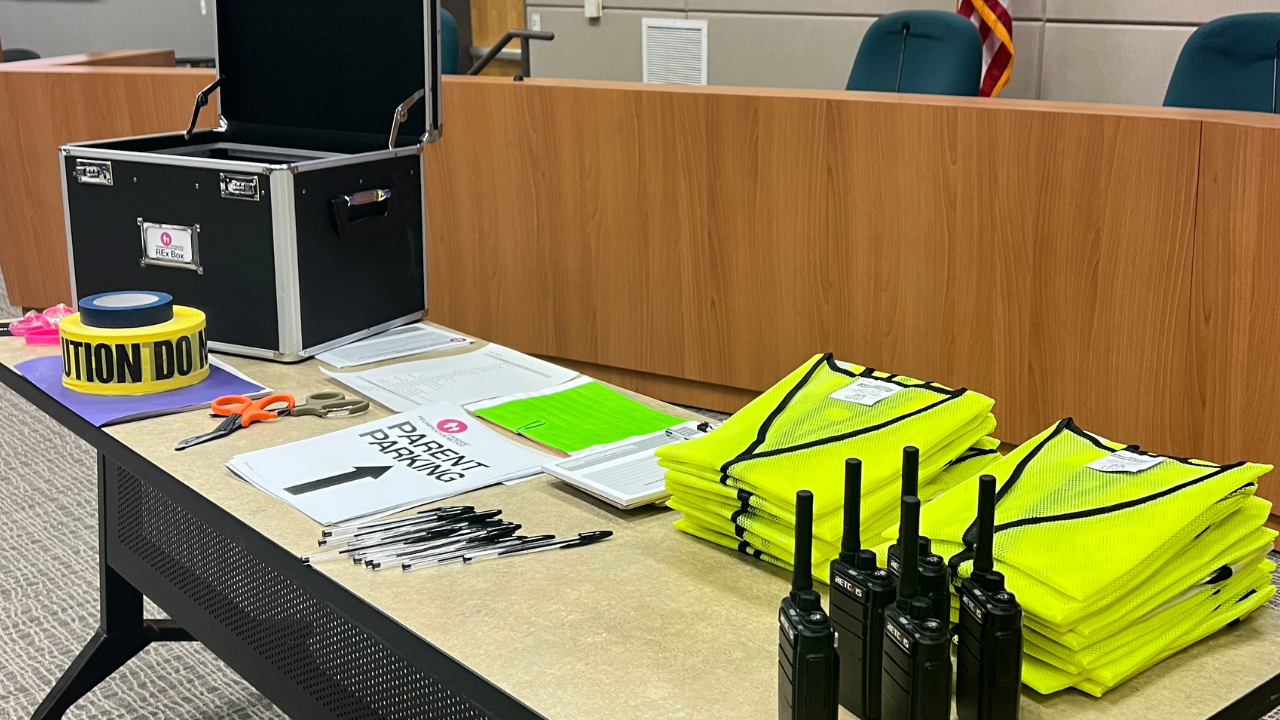
The REx box contains all the necessary materials for conducting a Reunification Exercise.
Give us a little info and we can get the ball rolling. Foundation Direct Training and Impact Sessions are delivered by Foundation staff or Instructor Practitioners. You know, the real deal.
We are here to help you meet your safety goals by leveraging the power of a common vocabulary and simple actions. Fill out the form, let us know what you’re thinking and we’ll help you understand the program that works for you.
To restore and protect the joy of youth through educational programs and positive actions in collaboration with families, schools, communities, organizations and government entities.